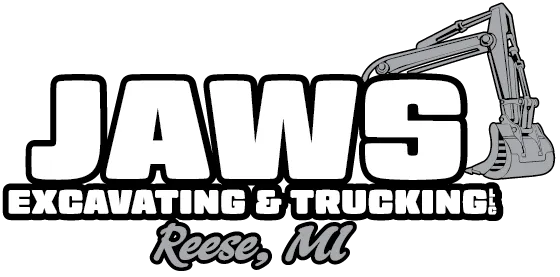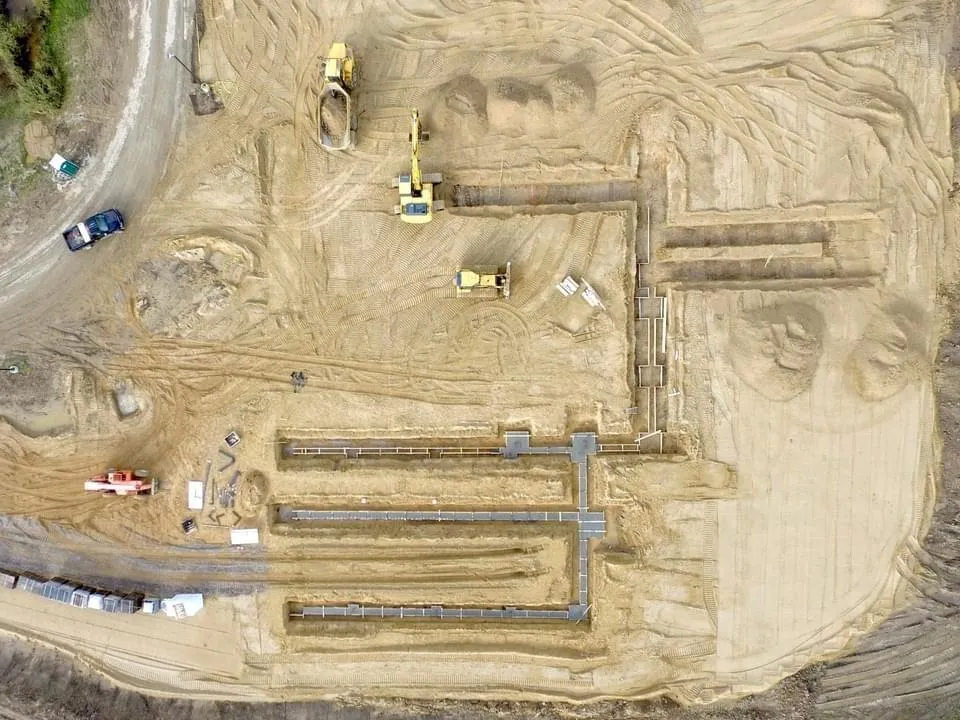Safety | Quality | Guaranteed
Learning Center

How To Calculate Cubic Yards
How to calculate volume (cubic yards)
Unlocking Precision in Excavation Projects
Excavation is more than just digging up dirt.
Whether it’s for constructing a sturdy foundation or sculpting a beautiful landscape, the precision with which we remove earth matters immensely.
It ensures projects are efficient, safe, and cost-effective.
But how do you guarantee accuracy when it's all about moving tons of material?
This is where our cubic yards volume calculator comes in.
Available on our website, this handy tool makes it easy to estimate exactly how much material needs moving—before you even break ground.
By ensuring precise volume calculations, it not only saves time and money but also protects the integrity of your site work.

What is a Cubic Yard?
Understanding the Fundamental Unit of Excavation Volume
A cubic yard is a standard unit of measurement used frequently in excavation and construction projects. It represents a cube of material—whether soil, sand, or gravel—measuring one yard on each side. To put it visually, imagine a box that is three feet wide, three feet long, and three feet high; that's a cubic yard.
Relevance in Excavation Projects
In excavation, the cubic yard is crucial because it helps professionals estimate the volume of material needed to be removed or added to a site. This measurement ensures that projects have enough material without excess, and helps in calculating the cost and logistics of moving earth.
Basic Measurements of a Cubic Yard
Width, Length, and Height: Each dimension of a cubic yard is three feet.
Conversion: One cubic yard is equal to 27 cubic feet, since 3 feet × 3 feet × 3 feet = 27 cubic feet.
Comparative Size: To visualize, a standard kitchen stove occupies about one cubic yard of space.
Importance of Accurate Volume Calculations in Excavation
Precision Powers Success
Accuracy isn't just a benefit—it's a necessity. Knowing exactly how much material needs moving shapes everything from your budget to your project timeline. Accurate volume calculations prevent the costly errors of over- or under-ordering materials, ensuring projects stay within financial and time constraints.
Streamlined Cost and Time Management
When you nail down the exact amount of earth to be moved, you can budget precisely and plan your resources more effectively. This foresight minimizes unexpected costs and delays, helping keep your project on track without the stress of last-minute adjustments.
Optimized Resources
Accurate volume data ensures you deploy the right amount of manpower and machinery from the start, enhancing productivity and avoiding resource wastage. It’s about putting every dollar and every day to its best use.
Takeaway
Whether you’re laying the foundation for a new home or carving out a landscape, precision in your initial volume estimates sets the stage for a smoothly run project.
Tools like a cubic yards volume calculator aren't just helpful; they're integral to your project's success.
4. How to Use a Cubic Yards Calculator
A Simple Guide to Precision
Using a cubic yards volume calculator is straightforward, but it's crucial to enter accurate measurements to get precise results. Here’s how to do it step-by-step:
Measure the Area: First, measure the length, width, and depth of the excavation site in feet. It’s essential these measurements are accurate; a small error can lead to significant discrepancies in volume.
Enter the Measurements: Input these dimensions into the cubic yards calculator. Typically, you'll find separate fields for length, width, and depth on the calculator interface.
Calculate: Press the calculate button. The calculator will convert the dimensions from feet to cubic yards, considering that one cubic yard equals 27 cubic feet (since 3 feet x 3 feet x 3 feet = 27 cubic feet).
Examples of Application
Foundation Digging: When preparing a site for a foundation, ensure you account for the exact footprint of the building. Over-excavation can be costly, so precise calculations are crucial.
Landscaping: For projects like garden beds or water features, consider the depth of topsoil or fill needed. Input the surface area and desired depth into the calculator to find out how much material you’ll need.
Pool Excavation: Pools often require more complex calculations because of their irregular shapes and varying depths. Divide the pool area into measurable sections, calculate each one’s volume, and then add them up.
Tips for Accuracy
Double-check your measurements with a tape measure or laser measuring tool.
Consider any slopes or grade changes on the site, as these will affect the total volume of material needed.
Takeaway
Whether you’re digging out for a new swimming pool or laying the groundwork for a stunning garden, a cubic yards calculator is an invaluable tool that ensures you have exactly what you need—no more, no less. It’s about smarter work, not harder work.
5. Benefits of Using a Cubic Yards Calculator for Excavation Services
Streamline Your Project with Smart Technology
A cubic yards calculator is more than just a tool—it's a project enhancer that brings efficiency and accuracy to your excavation tasks. Here’s how it transforms the excavation process:
Time-Saving and Enhanced Accuracy
Quick Calculations: Skip the manual calculations and potential errors. With a cubic yards calculator, you get instant, accurate results with just a few clicks.
Precision on Demand: Ensure every measurement is exactly right, reducing the risk of costly miscalculations and rework.
Improved Cost-Effectiveness
Avoid Material Wastage: By calculating the exact amount of material you need, you prevent over-ordering, which ties up funds in excess inventory that may never be used.
Reduce Shortages: Under-ordering can be just as problematic, leading to project delays as you wait for additional supplies. The calculator helps you order correctly the first time around.
Flexibility in Project Management
Adaptability: When project scopes change— as they often do—you can quickly recalculate material needs without guesswork.
Budget Management: Immediate access to volume data helps you make informed decisions about purchasing and resource allocation, keeping your budget on track.
Takeaway
Whether you’re excavating for a small home renovation or managing a large construction site, a cubic yards calculator is an essential tool that promotes efficiency, accuracy, and cost management. It's not just about digging deeper; it's about digging smarter.
Common Mistakes in Volume Calculation and How to Avoid Them
Even with the help of a calculator, mistakes can still occur if the input measurements are inaccurate or if certain factors are overlooked. Here are some common pitfalls and tips to avoid them:
Inaccurate Measurements: Ensure you measure the length, width, and depth precisely using a tape measure or laser tool. Even a small error can lead to significant miscalculations.
Overlooking Site Topography: If the excavation site has slopes, grade changes, or irregular shapes, simply multiplying length by width by depth won't give you the correct volume. Break the area into sections and calculate each one separately.
Unit Conversion Errors: Double-check that you're using the correct units (feet or meters) and conversion factors. Many calculators automatically do this, but it's still wise to verify.
Forgetting to Account for Overburden: In some cases, you may need to remove extra material like topsoil or vegetation before reaching the desired excavation depth. Make sure to include this in your calculations.
To avoid these mistakes, always double-check your measurements, be mindful of site conditions, and consider having a second person verify your calculations before proceeding.
Real-World Applications
The impact of using a cubic yards calculator can be significant, even for large-scale excavation projects.
For example, during the construction of the Delta Conveyance Project in California, which involved digging miles of tunnels, precise volume calculations were critical. Even a small miscalculation could have led to considerable cost overruns or project delays.
In a testimonial, a project manager from that initiative stated, "The cubic yards calculator was instrumental in ensuring we had the right amount of material and equipment from the start. It helped us avoid costly overruns and kept us on schedule."
Similarly, in landscaping projects like the creation of Central Park in New York City, accurate volume data was essential for budgeting and ordering the vast quantities of soil and other materials needed to sculpt the landscape.
As Loren Vander Noort, a landscape architect, explains,
"Digital tools like cubic yards calculators have transformed how we approach excavation planning. They bring a level of precision that was unimaginable in the past, allowing us to create breathtaking designs while maximizing efficiency."
Conclusion
Precision is paramount in excavation projects, and a cubic yards volume calculator is a valuable tool that ensures accuracy from the planning stages.
By providing reliable data on the amount of material that needs to be moved, it streamlines budgeting, resource allocation, and project timelines.
Whether you're breaking ground for a residential foundation, commercial construction, or an ambitious landscaping endeavor, integrating a cubic yards calculator into your process is a smart choice. It not only saves time and money but also contributes to the overall success of your project.

Try our Volume / Cubic Yards Calculator
Ready to experience the benefits of precision excavation planning?
Try out our user-friendly cubic yards calculator on our website today. Simply input your project dimensions, and let the calculator do the rest.
For larger or more complex projects, our team of experts is available to provide guidance and support.
Contact us to discuss your excavation needs and how we can help you achieve seamless, cost-effective results.
Unlock the power of accuracy in your next excavation project – visit our website and give our cubic yards calculator a try!
INVALUABLE EXPERIENCE
JAWS Excavating & Trucking, LLC
Superior communication
Quality work doesn't get done without excellent project communications.
UNMATCHED integrity
We understand that people do business with folks they trust. That's why we guarantee your satisfaction, every single time.
invaluable Experience
You wouldn't hire a mechanic to do your root canal. With us, you can hire with confidence.
UNMATCHED INTEGRITY
SATISFACTION Guaranteed









